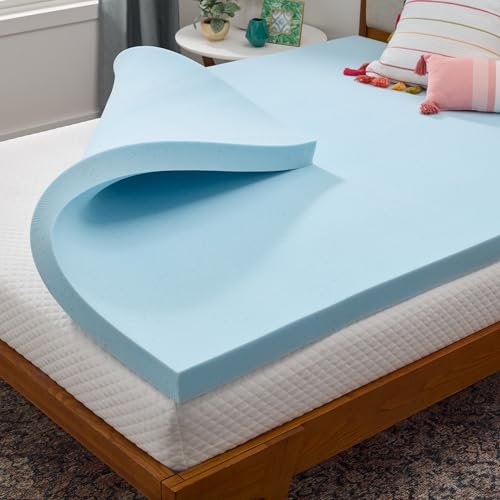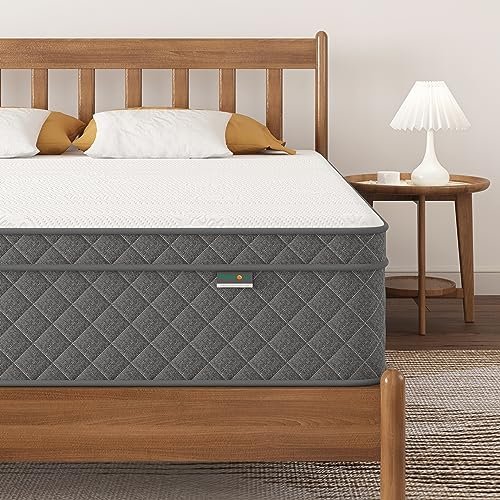
Unraveling the Mystery: What is the Size of a Queen Size Bed Frame?
So, you’re excited about getting a new queen-size bed! Maybe you’re upgrading, redecorating, or moving into a new space. It’s a fantastic choice, offering a perfect blend of spaciousness without overwhelming most bedrooms. But then comes the burning question: “What is the size of a queen size bed frame?”
It’s a common query, and for good reason! While the mattress size is fairly standardized, the bed frame itself will always be larger, and those extra inches can make all the difference in your room layout, comfort, and even getting it through the door. Don’t worry, we’re here to clear up the confusion with a detailed, friendly guide.
The Core Truth: Mattress vs. Frame
Let’s start with the foundation: the mattress.
A standard Queen Size Mattress measures approximately 60 inches wide by 80 inches long. (That’s 5 feet by 6 feet 8 inches for those who prefer feet!).
Now, for the crucial part: A queen size bed frame is designed to support and surround this mattress, meaning its external dimensions will always be larger than 60×80 inches.
Deep Dive: Understanding Queen Bed Frame Dimensions
The exact size of a queen bed frame can vary significantly based on its design, material, and features. However, we can break down the components that contribute to its overall footprint:
1. Internal Dimensions (The Mattress Fit)
- The internal dimensions of a queen bed frame – the space where your mattress actually sits – will be very close to the mattress size (60″ x 80″).
- It’s typically designed to be just slightly larger, perhaps 60.5 to 61 inches wide and 80.5 to 81 inches long, to allow for easy placement of the mattress and prevent it from being too snug.
2. External Dimensions (The Real Footprint)
This is where the variation happens, and it’s the measurement most critical for your room planning. The external dimensions include:
- Side Rails: The rails that run along the sides of the mattress. These add width and length to the frame.
- Headboard: Often the most prominent feature, adding significant height and sometimes several inches (or even a foot or more) to the overall length of the bed.
- Footboard: If present, a footboard will add extra length.
- Frame Material & Style:
- A sleek, minimalist metal frame might add only an inch or two on each side.
- A chunky wooden frame could add 3-6 inches per side.
- A luxurious upholstered frame with plush padding could add 4-8 inches per side.
- Frames with built-in shelves, storage, or ornate designs will naturally have a larger footprint.
General Range for External Queen Bed Frame Dimensions:
- Width: Expect anywhere from 62 inches to 70 inches (or even more for very elaborate designs).
- Length: Expect anywhere from 82 inches to 95 inches (especially with substantial headboards and footboards).
- Height: This is also highly variable.
- Frame Platform Height: The height of the platform where the mattress rests can be anywhere from 6 inches (low profile) to 18 inches (taller frames).
- Headboard Height: Headboards can range from a modest 30 inches to a dramatic 60+ inches from the floor.
Why Exact Measurements Matter for Your Home
Understanding these dimensions isn’t just academic; it’s intensely practical:
- Room Layout: Will your new queen frame fit comfortably in your bedroom? Will there be enough space to walk around it, open dresser drawers, and avoid bumping into other furniture?
- Doorways and Hallways: This is a big one! Can you actually get the headboard, footboard, and disassembled side rails into your home, through tight hallways, and up staircases?
- Aesthetics: Does the bed dominate the room, or does it fit proportionally?
- Functionality: If you have nightstands, will they still be accessible once the frame is in place?
Step-by-Step: How to Measure Your Space for a Queen Frame
Before you fall in love with a specific frame, measure your room meticulously.
- Clear the Area: Move any existing furniture or obstacles out of the way of your intended bed location.
- Measure Your Room’s Full Dimensions: Use a tape measure to get the exact length and width of your bedroom. Write these down!
- Identify Obstructions: Note the location of windows, doors (and their swing radius), heat vents, electrical outlets, and built-in closets. These all impact furniture placement.
- Mark the Desired Bed Location: Decide where you envision your bed going.
- Use Painter’s Tape (The Best Tip!): Outline the maximum external dimensions of the bed frame you’re considering directly on your floor with painter’s tape. This visual aid is invaluable.
- Simulate Movement: Walk around the taped-off area. Can you easily open doors, access closets, and walk past other furniture? Does it feel too cramped?
- Measure Delivery Path: Crucially, measure your doorways, hallways, and stairwells. Note their width, height, and any tight turns. A beautiful frame is useless if it can’t get into your bedroom!
Helpful Tips for Choosing Your Queen Frame
- The 2-Foot Rule: Try to leave at least 2 feet (24 inches) of walking space on three sides of your bed (or at least the sides you’ll be using). This prevents a cramped feeling.
- Consider Your Mattress: Do you have an extra-thick mattress or a pillow-top? This will add to the overall sleeping height and might look better with a taller headboard or frame.
- Think About Lifestyle: Do you like to sit up in bed and read? A sturdy headboard is a must. Do you have pets that jump on the bed? A lower frame might be easier for them (and you).
- Storage Solutions: Some queen frames come with built-in drawers. These are excellent for maximizing space but remember they will need clearance to open!
- Don’t Forget the Headboard Height! A very tall headboard might look stunning but could block a window or artwork you intended to showcase.
Common Mistakes to Avoid
- Confusing Mattress Size with Frame Size: This is the #1 mistake! Always ask for the external dimensions of the frame.
- Forgetting to Account for Headboard/Footboard Length: Many people only consider the side rails, forgetting that the head and foot of the bed can add significant length.
- Neglecting Room Flow: Even if the bed technically fits, if it blocks pathways or makes the room feel uncomfortably tight, it’s not the right fit.
- Ignoring Delivery Access: Many a beautiful piece of furniture has been returned because it wouldn’t fit through the front door or up a winding staircase. Measure all access points!
- Not Measuring Your Current Mattress: If you’re keeping your mattress, measure its exact dimensions to ensure your new frame’s internal space is compatible. While “standard” is usually reliable, a quick check never hurts.
- Underestimating Overall Height: Remember to consider the height of the frame itself plus your mattress (and box spring/foundation, if applicable) for the total sleeping height. This matters for comfort and accessibility.
In Conclusion
Choosing a queen size bed frame is an exciting step towards creating your perfect sleep sanctuary. By understanding that a queen frame will always be larger than your 60×80 inch queen mattress, meticulously measuring your space, and considering all the practical factors, you’ll be well-equipped to make an informed decision.
Armed with this knowledge, you can confidently select a queen bed frame that not only looks fantastic but also fits perfectly within your home, ensuring comfortable nights and beautiful mornings for years to come!
Frequently Asked Questions(FAQ)
Q. What are the standard dimensions of a queen size bed frame?
A. The standard external dimensions for a queen size bed frame are typically around 63 inches wide by 83 inches long (approximately 160 cm x 211 cm). This accounts for a standard queen mattress (60×80 inches) plus the additional material for the frame’s rails, headboard, and footboard (if present). The exact measurements can vary slightly by manufacturer and design.
Q. How does the queen bed frame size differ from the queen mattress size?
A. A queen bed frame is always slightly larger than a queen mattress. A standard queen mattress measures 60 inches (152 cm) wide by 80 inches (203 cm) long. The frame needs to accommodate these dimensions internally, plus it has external components like side rails, a headboard, and potentially a footboard, which add a few inches to both the width and length, making the overall frame dimensions larger.
Q. Does the design or style of a queen bed frame affect its overall dimensions?
A. Yes, significantly. While the interior dimensions must fit a 60×80 inch mattress, the exterior dimensions can vary widely. A simple platform frame will have minimal extra material, perhaps only an inch or two on each side. Frames with elaborate or upholstered headboards, thick side rails, or built-in storage drawers can add several inches or even a foot to the overall width and length of the frame.
Q. What are the typical interior dimensions of a queen size bed frame?
A. The interior dimensions of a queen size bed frame are designed to precisely fit a standard queen mattress, which is 60 inches (152 cm) wide and 80 inches (203 cm) long. Some frames might have a tiny bit of wiggle room (e.g., 60.5 inches wide) to make mattress placement easier, but the goal is a snug fit to prevent the mattress from shifting.
Q. What is the average height of a queen size bed frame?
A. The height of a queen size bed frame can vary greatly depending on its style. The platform where the mattress rests is typically between 6 to 18 inches (15 to 46 cm) off the floor. However, with a headboard, the total height can range from 30 inches (76 cm) for a minimalist design to over 60 inches (152 cm) for frames with tall, ornate headboards. This measurement usually refers to the highest point of the headboard.
Q. How much space should I allow in my bedroom for a queen size bed frame?
A. For comfortable movement and to allow for other furniture, it’s generally recommended to allow at least 2 to 3 feet (approximately 60-90 cm) of clearance on the sides and foot of a queen size bed frame. Therefore, in addition to the frame’s external dimensions (e.g., 63×83 inches), consider a room size that provides at least 87×107 inches (approx. 7.25 ft x 8.9 ft) of clear space, ideally more.
Q. Are there different “types” of queen sizes, like California Queen or Olympic Queen, that affect frame size?
A. While less common for frames specifically, there are variations in queen mattress sizes. An “Olympic Queen” is wider at 66×80 inches, and a “California Queen” (which is less standardized but sometimes refers to a longer queen) might be 60×84 inches. If you own one of these non-standard mattresses, you would need a custom-sized frame or a frame explicitly designed for that specific “queen” variation, as a standard queen frame would not fit. Most frames sold are for the standard 60×80 inch queen.
Q. Do headboards and footboards contribute to the overall length or width of a queen bed frame?
A. Yes, headboards contribute significantly to the overall length, extending beyond the 80-inch mattress length. Footboards also add to the length. While less common, very wide or oversized headboards can also slightly increase the overall width beyond the mattress dimensions. It’s crucial to measure the total external dimensions, including these elements, when planning your room layout.
Q. What factors make a queen bed frame appear larger or smaller than its actual dimensions?
A. The visual perception of a queen bed frame’s size can be influenced by several factors. A low-profile platform frame with a minimalist headboard will look smaller and less obtrusive. Conversely, a frame with a tall, thick, upholstered headboard, chunky side rails, or built-in storage will appear much larger and take up more visual space, even if its core footprint isn’t drastically different. Room size, wall color, and other furniture also play a role in perception.
Related Articles
7 Top Full Size Bed Frames: What is the Dimensions of a Full Size Bed Frame and More!
Getting a good night’s sleep often starts with the right bed, and for many, a full-size bed is the perfect sweet spot between a twin and a queen…
How Much Is a King Size Sleep Number Smart Bed
How Much Is a King Size Sleep Number Smart Bed? Your Guide to Understanding the Investment Recommended Product: Select Comfort Air Bed Chamber for Sle…
How Much Does a Sleep Number 360 Smart Bed Cost
How Much Does a Sleep Number 360 Smart Bed Cost? Recommended Product: Sven & Son Classic Adjustable Bed Base — head and foot lift, massage, under-…



